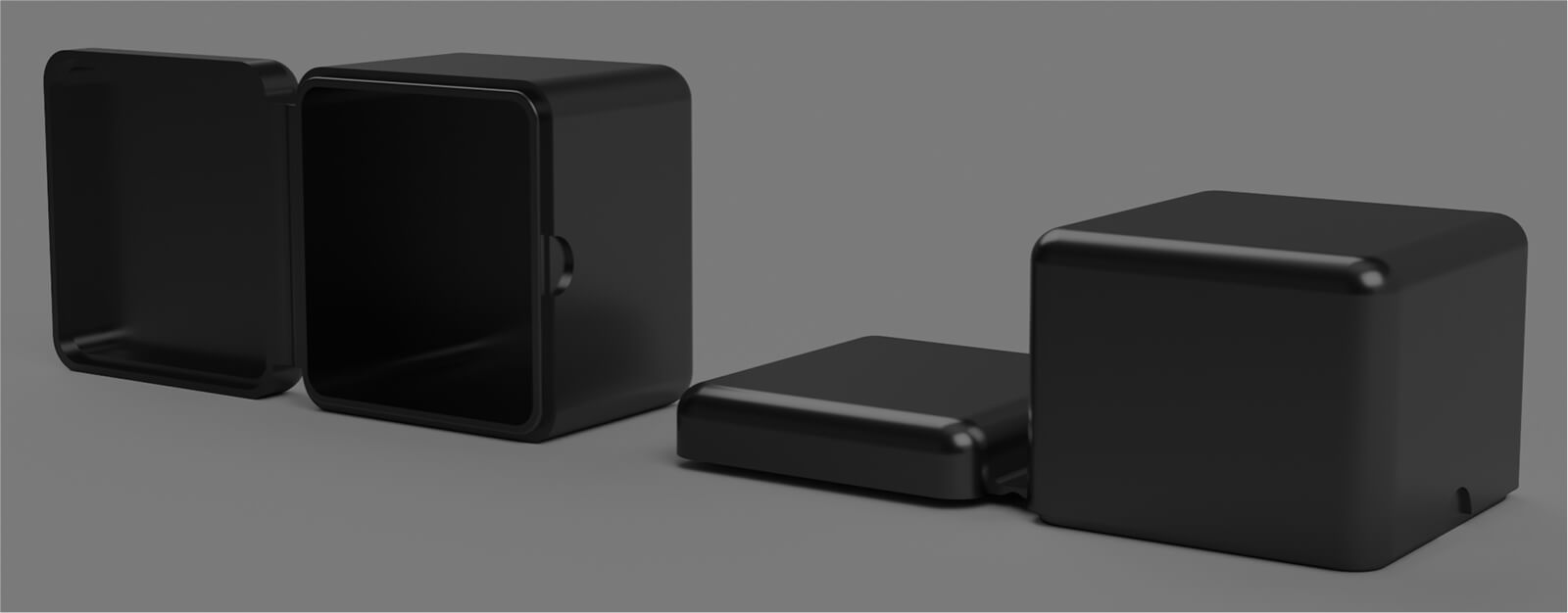Living hinges are a simple and cost-effective way of incorporating flexure bearings into plastic objects like containers and food packaging. While most hinges typically require at least two separate components, a living hinge is made from the same material as the two sections it connects.
This article looks at the basics of living hinges. It discusses tips on how to design living hinges — both for injection molding and for 3D printing, which has become a more popular method for their fabrication in recent years. It also discusses the best materials for living hinges and common examples of living hinges, from shampoo bottles to medical devices.
What is a living hinge?
A living hinge is a thin and flexible section of material that connects two rigid sections, usually made of that same material. In most cases, the hinge and the two rigid sections are fabricated from a single mold (injection molding) or as a single print job (3D printing).
The term “living hinge” was apparently coined by an engineer at Enjay (now ExxonMobil) in the 1950s. At the time, Enjay was experimenting with the plastic polypropylene for injection molding and discovered that, in very thin sections of a mold, the material’s molecules oriented themselves according to the direction of flow. It meant that the thin section of the molded part could be bent over and over without breaking — making it a perfect hinge.
Living hinges are unique because they are part of the same structure are their two connecting sections: imagine that a doorframe, a door, and its butt hinge were all made from a single interconnected piece of material; that would be a living hinge. In reality, however, living hinges are used for small plastic items like food containers.
Because living hinges are incorporated into a part, they can result in significant cost savings and inventory reduction.
Living hinges are sometimes known as continuous hinges or piano hinges.
Types of the living hinge
Most living hinges are simple tab-like joints, but more complex designs allow for different movements between sections. Living hinge types include:
- Flat hinge: A single thin tab that connects two rigid sections and can bend up to 180 degrees
- Double hinge: A two-part hinge that allows for a bend of up to 360 degrees
- Bi-stable / butterfly hinge: Bi-stable and butterfly hinges, seen in “flip-top” bottle caps, for example, can rest in either the open or closed position
Injection molding living hinges
Injection molding has, for several decades, been the principal method for fabricating plastic parts with living hinges.
Although living hinges can be added to a variety of molded parts, there is limited flexibility in how they can be designed. Bear in mind that living hinges will not work for very large parts, because a very thick hinge will simply break when subject to the tensile stress of bending. This is because the molecules of molded polypropylene will only orient themselves in narrow spaces.
When designing (flat) living hinges for injection molding — usually in polypropylene or polyethylene — the following guidelines should be adhered to:
- The thickness of the living hinge should be around 0.3 mm
- The length of the living hinge should be around 1.5 mm
- A radius of 0.75 mm should be added to the outside bend
Factors like gate placement and flow rate will also affect the success of a molded living hinge, but most injection molding companies will be able to control these parameters for the best outcome.
3D printing living hinges
Living hinges came into existence thanks to injection molding since flow direction is imperative to the strength and durability of the hinge. Nonetheless, 3D printing has emerged as a viable technique for prototyping living hinges.
When using a 3D printer to make living hinges, the orientation of the part on the print bed is a key factor: the width of the hinge, not the (generally much shorter) length, should go along the Z-axis during printing. If the hinge is repeatedly bent along the direction of layer lines, it will break more quickly than if bent across the layer lines.
Additionally, 3D printed living hinges must be thicker than molded ones to be sufficiently durable, though they will be inherently less flexible.
When designing living hinges for 3D printing, the following guidelines should be adhered to:
- Parts should be oriented so the width of the hinge is built up layer by layer
- The thickness of the living hinge should be around 0.6 mm
- A radius of 1.5 mm should be added to the outside bend
Living hinge materials
The most common and best material for injection molding living hinges is polypropylene. Polyethylene can be used as a substitute.
The best materials for 3D printing living hinges are nylons (PA 11 or PA 12), whether for FDM or SLS printing. However, multi-material FDM printers allow for the hinge to be printed in a flexible material like TPU and the rest of the part to be printed in a rigid material; TPU hinges will last longer than nylon ones.
Living hinge examples and applications
Living hinges can be seen in many common plastic items, including:
- Shampoo bottle lids
- Dental floss boxes
- Condiment bottle lids
- Makeup compacts
- Storage containers
- Hemostats
Ready to make your parts and prototypes with living hinges? Contact 3ERP for a free quote on your next injection molding or 3D printing project.
